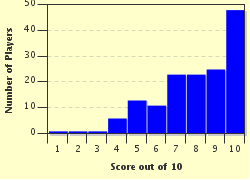Quiz Answer Key and Fun Facts
1. For most of the period 1717 to 1819, Colombia was part of a wider Spanish colony along with its neighbours Venezuela, Ecuador, and Panama. By what name was this historic territory known?
2. In western Colombia, the Andes mountain range divides into three parallel ranges known by what collective term?
3. Large swathes of south-east Colombia are extremely sparsely populated. Why is this?
4. With which of Colombia's four South American neighbours does it share the shortest land border?
5. Which large bird appears at the top of Colombia's coat of arms with its wings outstretched?
6. The two highest mountains in Colombia are almost identical in height and named after two important figures in the history of Central and South America. One is Pico Cristóbal Colón, what is the other?
7. Which major river forms part of the border between Colombia and Venezuela?
8. The Museo del Oro is a major tourist attraction in Colombia's capital city, Bogotá. To what is it dedicated?
9. The National Archeological Park of Tierradentro is particularly known for its pre-Columbian hypogea. What are these?
10. The northern-most of Colombia's 32 departments is an archipelago lying off the east coast of Central America. What is the name of the largest island in this group?
Source: Author
Fifiona81
This quiz was reviewed by FunTrivia editor
agony before going online.
Any errors found in FunTrivia content are routinely corrected through our feedback system.

